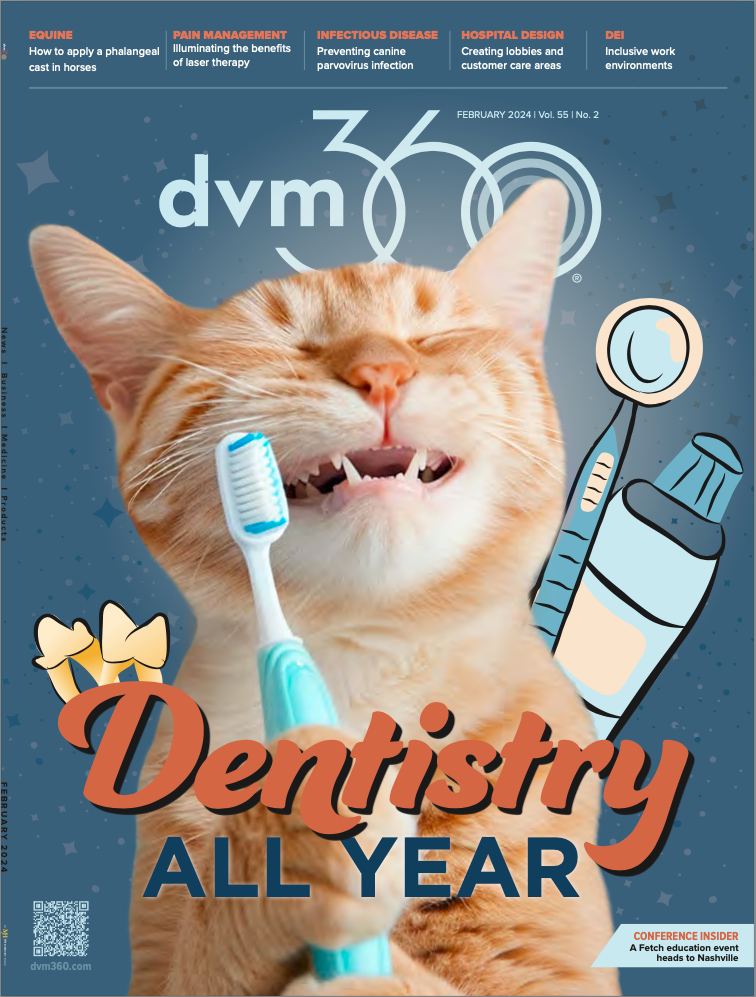Inclusive work environments for the veterinary space
Drs Cary and Marshall explain 6 strategies for making a workplace more inclusive for staff
solthanya / stock.adobe.com

Creating an inclusive space can start with anyone. Any team member can lead by example and make sure everyone feels seen and heard. Kemba Marshall, MPH, DVM, DABVP (Avian), SHRM-CP, founder of Marshall Recruiting Consortium, expressed this sentiment with attendees at the 2023 Fetch dvm360 conference in Charlotte, North Carolina, when she said, “So for inclusive workplaces, everyone has a role. We don't want to talk about your title, we don't want to talk about your tenure. If they walk into the building and represent your organization, there is something that they can do.”
In a joint session titled, “Your Role in Creating an Inclusive Veterinary Workplace,”1 with Mia Cary, DVM, CEO and change agent of Cary Consulting, the pair shares 6 ways to create a more inclusive workplace for staff. Taking inspiration from Kathy Gurchiek, editor for the Society of Human Resource Management,2 Cary and Marshall state the 6 strategies as:
- Leader education
- Form an inclusion council
- Celebrate employee differences
- Listen to employees
- Hold more effective meetings
- Communicate goals and measure progress
Leader education
“Even though we all know what the word inclusive means, not everyone knows how to create a more inclusive workplace. That's not something we naturally know. So, we want to make sure we provide education around this, and we want to start with our leadership. We really want to get the senior leaders engaged, involved, and on board, and then include everyone in that education. So that leader education is critical,” said Cary. Assuming your senior leaders know how to make the work environment more inclusive can be a crucial mistake in progressing the practice or organization. Taking the time to officially learn and train senior leaders on inclusive workplaces can allow effective measures to be taken. Direct education can also help staff feel they are in good hands with their leadership, knowing that their leaders took the time out to value this type of training.
Inclusion councils
An inclusion council can have many names but is essential a group within the practice or organization that consists of staff from several different perspectives. With multiple viewpoints and backgrounds, this group can discuss issues or goals and work through them together. Marshall said, “Everyone on the inclusion council has to bring a different perspective; different age, different roles/titles, specialty, [gender/ethnicity], some difference in order to get on the inclusion council. This group is charged with bringing their full unfiltered opinions to leadership. [For example]: How do we think it's going? What's our patient flow? Do we have a lot of turnover?”
Celebrating differences
Celebrating what makes each individual on the veterinary team different can make everyone feel more appreciated for what makes them unique. Celebrating these differences can come in many ways but one suggestion from Cary and Marshall is to invite team members to share their traditions in the workplace. “Another element that this brings, in addition to cultures that are inclusive, is you start to build more trust. Because the best way to build trust is by sharing experiences. And when we do that, we create that foundation of trust, which is critical for a cohesive team,” Cary said.
Listen to employees
Active listening is also a form of effective communication. When employees feel listened to and heard, they are usually more likely to openly communicate their concerns or ideas for change. Marshall told attendees to reflect and ask themselves, “Can they communicate with you in an anonymous way? Are you showing some type of action? Are you hearing the feedback and doing something? Instead of just saying, ‘Well, we've heard that, but we can't do any of those things, but continue to give us your feedback.’ No one is going to fall for it.”
Effective meetings
Meetings can often take up a lot of time in a workday and when these meetings are ineffective, they can feel like a waste of time. Cary shared a good way to determine if a scheduled meeting will be effective: “One thing is making sure that you never hold the meeting unless there's a communicated purpose. Why is this meeting happening? And sometimes that can be [written with] a formal agenda. Sometimes it just can be, ‘Hey, we know you've been having some issues with the communication from the back to the front, we just want to talk about that.’” To make these meetings more inclusive, Cary and Marshall suggested switching up the facilitator of the meeting, making sure everyone is heard, and giving space for anyone who would like to speak. Marshall also added that sometimes starting with people who don’t usually share can make them feel more included.
Communicating goals and measuring progress
Marshall stated that oftentimes when working in a team we can get caught up in assuming everyone knows the goals and what needs to happen next. Marshall gave an example, “So many times in our veterinary profession, we just assume that when the patient has come in, everything that's in my mind [my team members] knows what I want for that patient. Did I say I need some blood work [or] I need a urinalysis? Nope.” So, with that, it is important to learn how to clearly communicate what you need in every situation. If you need bloodwork for a patient, directly ask a team member to get that started for you, instead of assuming it will get done without asking. This way, team members are more involved in the care process and are not set up for failure with unspoken goals.
Cary and Marshall also remind attendees that these goals should still be realistic and attainable, that way they can also be properly measurable. Cary said, “Because if you communicate the goal, but you're not measuring the progress, there is no way to figure out what's working, and what's not."
These are just some of the strategies you can implement in your practice to make the workplace more inclusive and have every employee feel fully a part of the team.
References
- Cary M, Marshall K. Your Role in Creating an Inclusive Veterinary Workplace. Presented at: Fetch dvm360 conference; Charlotte, North Carolina; March 24-26, 2023.
- Gurchiek K. 6 Steps for Building an Inclusive Workplace. Society of Human Resource Management. March 19, 2018. Accessed October 25, 2023. https://www.shrm.org/hr-today/news/hr-magazine/0418/pages/6-steps-for-building-an-inclusive-workplace.aspx
